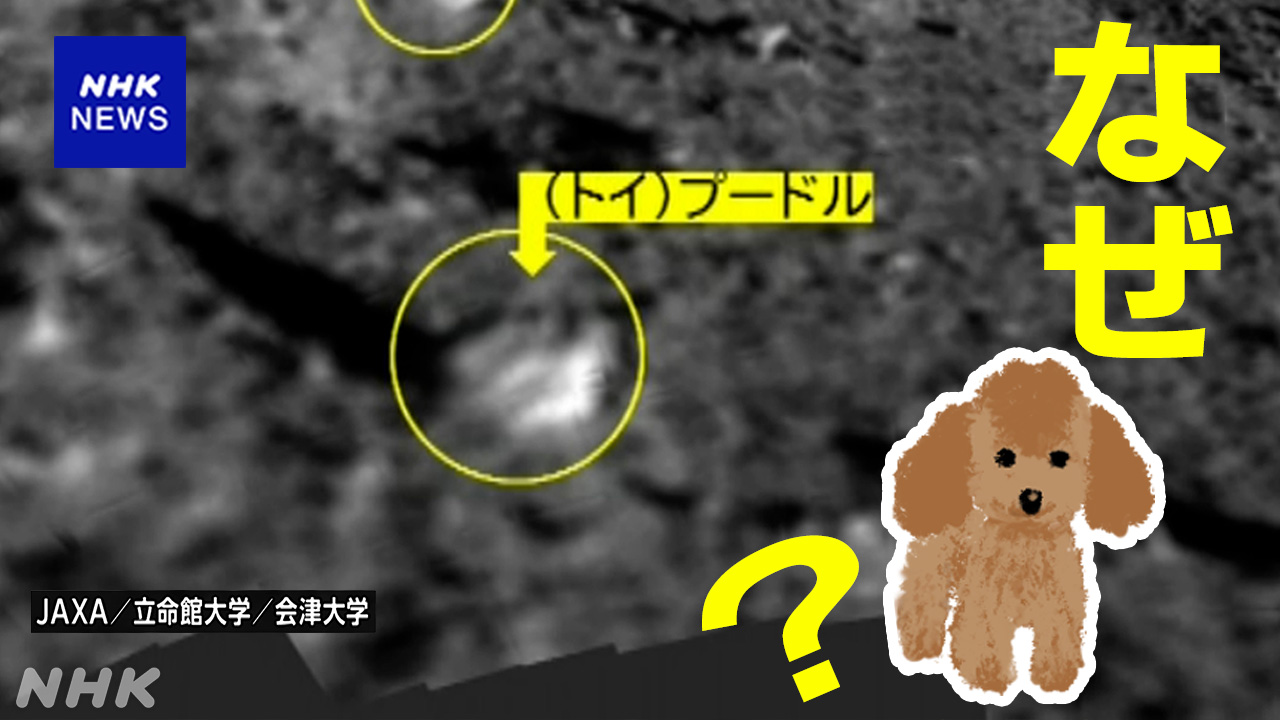Last month, Japan's unmanned spacecraft ``SLIM'' successfully landed on the moon.
Although there was a time when power generation was not possible, the mission was successfully restored and achieved results such as the observation of 10 rocks on the lunar surface.
These rocks were given dog names such as "Toy Poodle" and "Tosainu", and the question of why they were given dog names became a hot topic.
We asked the person in charge of the rock observation team about the origin of the name and future prospects.
It was a miracle that we were able to observe it.
The person in charge of the team observing rocks on the moon was Kazuto Saeki, director of the Space and Earth Exploration Research Center at Ritsumeikan University, who responded to the interview.
SLIM experienced an abnormality in its main engine, and landed with the solar cells facing west instead of facing upwards. Although the spacecraft was unable to generate electricity due to lack of sunlight, the solar cells were able to generate electricity approximately eight days after landing. Communication with the ground has been re-established and cameras are now operational.
Kazuto Saeki, Director, Center for Space and Earth Exploration, Ritsumeikan University
: ``I was in the JAXA control room at the moment of recovery.Everyone shouted ``Wow'' and burst into applause.The camera fell face down. I would have never been able to make any observations if I had been there, so this is truly miraculous and I am grateful to God of fate."
Why the dog's name?
An image of rocks on the moon observed by SLIM.
It was captured by a camera mounted on the spacecraft.
The 10 rocks are named after dogs to make them easier to distinguish.
This is an image taken by a special camera of one of them, a toy poodle.
The appearance of the rugged rock surface is displayed.
But the dog can't see it.
Why the dog's name?
In fact, it was Mr. Saeki who first named the rocks after dogs, in order to make it easier for researchers involved in observation to imagine their respective sizes.
Kazuto Saeki, Director, Ritsumeikan University Space and Earth Exploration Research Center
: ``At first, we tried to identify the rocks by numbering them, but when we were discussing the order in which we should observe them, we ended up saying, ``The second rock to be analyzed is number 1.'' , we decided that we needed a specific name because it would cause a lot of confusion.''
Other names considered included ▽place names around Sagamihara City, Kanagawa Prefecture, where SLIM's control room is located, ▽names of countries around the world, and ▽names of fruits, but Mr. Saeki, who loves dogs, came up with dog names such as toy poodles and Shiba Inu. When he suggested it, the other team members started naming their favorite dogs one after another, and the idea stuck.
Kazuto Saeki, Director, Center for Space and Earth Exploration, Ritsumeikan University
: ``I thought of the toy poodle because it was a very small and cute dog, and I was going to call it ``poodle'' for short. I added the notation ``(toy)'' because many people imagine it as ``Toy Pooh'', but the abbreviation ``Toy Poo'' has become established, so it was a little different from what I had imagined.''
How to name celestial objects
To give an official name to a celestial body or landform, an application must be submitted and approved by the International Astronomical Union.
For example, the crater where SLIM landed is named "SHIOLI," and the project team applied for this landing to be a "bookmark" that marks a turning point in history. Approved.
In addition, the asteroids ``Ryugu'' and ``Itokawa,'' on which Japanese probes once landed and brought back samples, are also recognized as official names by the International Astronomical Union.
When the team announces the results of their ongoing analysis at academic conferences, they will use the dog's names that have been published so far, but regarding the official name, Saeki says, ``Right now, we are not particularly interested in applying. I haven't thought about it, but if there's a big demand for it, I might consider it.''
Future prospects
His future focus will be to explore how the moon was formed.
The team is currently analyzing whether the observed rock is olivine, a mineral that once existed inside the moon.
Image of “Giant Impact Theory”
If ``olivine'' is found and its composition is similar to the rocky layer under the Earth's crust (mantle), this result will support the ``giant impact theory,'' the hypothesis that the moon was born from the earth's mantle. It is considered.
The team hopes to publish the observation results in six months to a year.
Kazuto Saeki, Director, Ritsumeikan University Space and Earth Exploration Research Center
: ``I thought it would be a success if I could photograph one rock, so I was really surprised that we were able to photograph 10 rocks, which was better than I expected.I would also like to thank the entire team. After the observation was successfully completed, the team members celebrated, but I may be feeling a little tired now because I drank until morning.I feel like I'll be able to produce the world's first observational data. I hope to lead to results that will help solve the mysteries of the origins of the moon and the earth."

